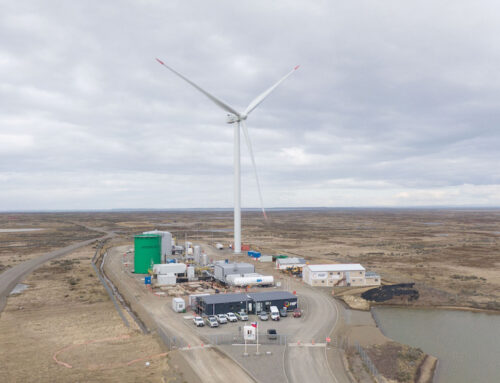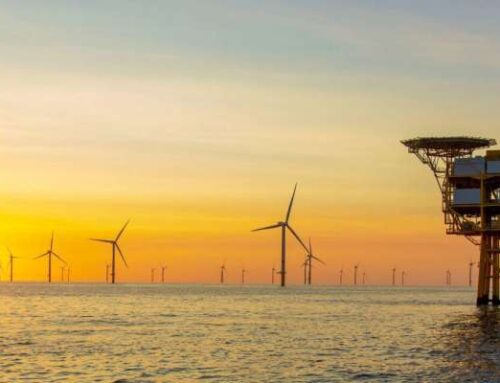Quinbrook: Tipping the balance of power
October 6, 2024
This article is sponsored by Quinbrook Infrastructure Partners
Quinbrook Infrastructure Partners describes itself as an investment manager with the entrepreneurial DNA of a power project developer and operator. Today, the US is the firm’s largest market and home to several milestone investments in its most recently closed flagship fund – the Net Zero Power Fund – which focuses on delivering renewables supply solutions to help decarbonise energy-intensive industries.
Renewables developer and independent power producer Scout Clean Energy is one example. From an initial investment of just $6 million in 2017, the team took a business of just a few people and scaled it to one with 100, a gigawatt of operating assets and a pipeline of 15 to 20GW. Five years later, Scout Clean Energy was sold to Brookfield for $1 billion.
John Lucas, head of the US investment team at Quinbrook, joined the company two years ago with extensive energy experience having worked for Amazon Web Services and Meta across energy procurement and renewables for their hyperscale data centre businesses.
Where do you view the best opportunities emerging in the energy transition?

There is a major corporate drive in the US towards net zero, which means removing carbon from manufacturing and equipment supply chains and looking carefully at every element of that. Opportunities come from working with those corporates to provide them with renewable energy, and to help them build new low carbon industrial facilities. At the same time, the industry is looking to tap into the considerable incentives available thanks to the Inflation Reduction Act (IRA).
You can deploy this strategy into any industry that requires land, power, water or fibre connectivity. What matters is the ability to deliver this infrastructure and related service solutions for lower carbon outcomes. We see a number of opportunities in the US to do just that. We’re working with some of the largest battery suppliers, solar panel manufacturers, and steel and concrete manufacturers, to help them with their manufacturing process and to ensure they are supplied with renewable energy. That’s where our ‘Power to X’ initiative fits in, with hyperscale data centres a good case study.
Why focus on the data centre space?
Our expertise lies in securing the infrastructure, power and land required to build a data centre, and in helping to decarbonise the built infrastructure assets and their energy footprint. I would say the opportunity is particularly significant in the US because of the larger scale required by industry here. We have partners asking for data centre campuses that are 500MW or larger. Over in Europe, or Asia, a 50MW data centre is big, and a 100MW data centre is massive.
It’s also the size of the addressable market for the offtake in the US which outstrips most of the rest of the world. We have several major projects in the pipeline right now. We’re targeting the large hyperscale data centre customers – Microsoft, Google, Amazon and Facebook. Tech firm Oracle has also made a couple of public announcements recently and you’ve got Nvidia and some others that are really starting to build at scale.
How do you square the circle when it comes to the power demands of data centres?
The ‘Power to X’ projects that we work on seek to deliver 100 percent renewable energy solutions, whether through direct PPAs or off-site procurement, as well as ambitious net-zero targets.
For data centres, we see the deployment of large-scale solar power coupled with battery storage as the anchor technology solution. Onshore wind is a more difficult resource to build new in our site locations. A lot of the best wind resource has already been exploited, so the incremental MW you get for a new wind resource in certain locations is difficult. The customers building hyperscale want the renewables supply projects to be as close to them as possible, so solar and battery storage are often the best fit.
Obviously, as with all data centres cooling is a major issue. We are led by the needs of our customers and their chosen cooling solution which we help them make as sustainable as possible. This sometimes means we use liquid cooling; it really depends on where they are located within the US and whether they are in water sensitive areas. Some areas are more conducive to evaporative cooling than liquid cooling.
We have to be innovative in trying to find sustainable water solutions. In one of our projects, we are actually drilling a new well to access a non-potable water source, filtering it and using it to cool the data centre. The facility can utilise the water 28 times before we return it to community use.
What is interesting is that with the advance of artificial intelligence and machine learning you don’t have the same latency issues that you have with traditional cloud loads. Because of this, developers in the future could look at locating data centres in naturally low temperature regions where you haven’t typically seen data centre deployment to date.
What are the challenges for managers from a project development point of view?
I think first it is the grid interconnection. Being able to get interconnected to the grid right now is very difficult, and a time intensive thing to do. You might acquire a piece of land and try to get the interconnection to the grid to supply your load, but it could be five or seven years before you get the capacity you need.
Once you have solved the interconnection problem, you then have to solve the problem of whether you have supply in the area or whether the utility that you are working within that regulated area has the supply.
After those problems have been solved, it’s then a case of whether you’re able to secure the land that benefits from interconnection and that available supply. These three challenges mean project development is a very competitive landscape today, and it is extremely difficult to solve all three simultaneously.
Presumably recent legislation creates opportunities for tax equity project finance. Can you give some real-world examples of projects that are using it?
We’ve done over $5 billion worth of project debt financing with more than $1 billion of tax equity financing at Quinbrook and have built some very solid relationships with many of the largest funders. At Primergy Solar, we did a milestone tax equity financing on the largest co-located solar plus battery storage project ever built in the US. Project Gemini is located just outside of Las Vegas. And at Rowan Digital Infrastructure, we expect to close a c$1 billion project financing to enable further data centre builds.
How do you weigh in the possible change of administration? And are there new technologies that particularly interest you?
We’re not concerned who is elected president in November from an investment point of view. We’re not making investment decisions based on the hope that a regulatory regime is going to stay in place. We make sure that any investment we make is durable enough that when there is a change of regime, the project is still able to get off the ground and move forwards. That’s the focus for us.
In terms of new technologies, we weigh up all types. We have spent considerable time weighing up whether to invest in certain green hydrogen opportunities. There are also a lot of conversations around small modular nuclear reactors. Perhaps both of these technologies will play a long-term role in the energy sector, but so far, we have not identified any investable opportunities from our perspective.
Rather than chasing what could become the next technology, we’re really focused on what we do best. In the US, industrial decarbonisation opportunities requiring our development skills are so significant that we don’t really need to look far to secure interesting deals where we can add considerable value.
How are firms working to decarbonise manufacturing more generally?
If you are a manufacturer of steel, concrete, or even solar panels, these are all very energy intensive processes. What we’re doing is working with these companies to identify locations to build their new lower carbon facilities and help them devise the strategies necessary to deploy renewables, as well as helping identify new technologies that reduce their overall energy need.
Some of the more traditional industries such as steel and concrete are well developed industries and tend to be a little more geographically specific. The best opportunities are often in the ‘hard to abate’ industries. There was a big push in the IRA for battery manufacturing and solar manufacturing in the US, but only a few major announcements have been made so far. However, there’s definitely strong appetite out there, it just hasn’t been met yet. That is exactly why we’re focusing on this area.
Search
RECENT PRESS RELEASES
Related Post





